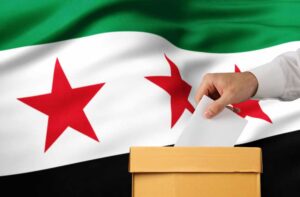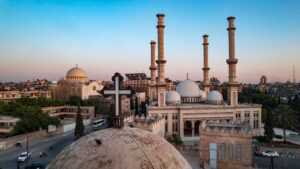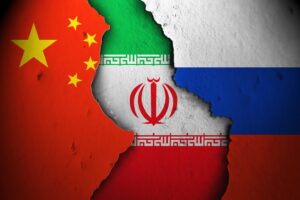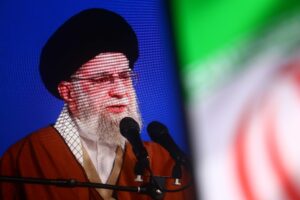Following the election of Iran’s reformist and moderate candidate, Masud Pezeshkian, as the new president of Islamic Republic, a congratulatory message from Afghanistan under the leadership of the Taliban was notably short, even omitting the name of the new president. “The Islamic Emirate of Afghanistan hopes that the relations between the two neighboring and Muslim countries will be further strengthened and expanded in various fields with the establishment of the new government,” Afghanistan’s foreign ministry spokesman Abdul Qahar Balkhi wrote in a post on X.[i]
In contrast, opponents of the Taliban government had a warmer welcome for Pezeshkian. For example, the Afghanistan Liberation Front (AFF)—an anti-Taliban militant group operating in the country—congratulated Pezeshkian and said that “this victory promises a positive change in the way Tehran interacts with the Taliban.” “The victory of Pezeshkian has opened up hope for a better tomorrow and overcoming political and economic challenges in Iran, and it also promises positive changes in the way of interaction and diplomacy of this country in the region, especially in the case of Afghanistan”.[ii] The National Front of Afghanistan (NFA)—another anti-Taliban militant group—struck a similar tone in response to the election.
The Taliban and Afghan opposition groups’ different approaches are a reflection of the complexities of Iran-Afghanistan relations. Iran, like the international community, has not recognized the Taliban’s rule over Afghanistan, but handed over the Afghan embassy in Tehran to the group. Indeed, Iran has signed several memorandums of cooperation related to trade and transit, especially with regard to the Chabahar Port, the “only ocean port” of Iran on the Gulf of Oman, which enables the transit of goods between Afghanistan and India. The Chabahar Transit Project was created by India, Iran, and Afghanistan in 2016, which Uzbekistan joined recently too. The Taliban hopes to use this commercial transit route more amidst its tensions with Pakistan.

Figure 1. The Routes of the Chabahar Transit Project (Source: Eurasia Daily Monitor)
Iran is building a 625-kilometre-long (388 miles) rail route from Chabahar Port to Zahedan, which can accelerate the transit of goods along the north-south corridor. Importantly, Chabahar port is more quickly reachable for Afghanistan than the port in Karachi, Pakistan. While the distance between Zaranj, the capital of Nimroz province, and Chabahar is about 700 kilometres (435 miles), it takes more than 1000 kilometres from Karachi to reach Torkham and Jalalabad. These geographical advantages, in addition to the intensification of the Taliban’s conflict with Pakistan—as part of border conflicts as well as the ongoing deportation of Afghan immigrants from the country—have increased the importance of the Chabahar port for Afghanistan.
Afghanistan is still one of Iran’s trading partners under the leadership of the Taliban. Akhundzada Abdul Salam Jawad, the spokesperson for the Iranian Ministry of Industry and Commerce, said that “Afghanistan had a trade volume of $695 million with Iran in the first three months of 2024”.[iii] The spokesperson added that “this is comprised of $14 million in exports and $681 million in imports”.[iv] This statistic clearly shows a significant positive trade balance in favor of Iran. Afghanistan’s weak economy, as well as the high volume of exports of oil and fuel, construction materials, iron, steel, and food, have played an important role in creating this balance. Currently, Afghanistan is Iran’s fourth export destination while Iran, along with Pakistan and China, are Afghanistan’s most important trading partners. The international isolation of Afghanistan has provided a great opportunity for Iran to develop trade relations with the country.
Reducing the number of Afghan immigrants in Iran
Notwithstanding, there are serious challenges in the relations between Iran and of Afghanistan. The new wave of Afghan immigrants to Iran after the Taliban regained power, drug trafficking, the smuggling of goods and fuel to Afghanistan and other border management problems, and contesting claims to the water resources of the Helmand River [or Hirmand, as Iranians refer to it] are at the center of disputes between the two sides. Although the policy problem of accommodating Afghan immigrants is not a new one and Iran has hosted millions—both immigrants and refugees—following the occupation of Afghanistan by the Soviet Union in the 1980s, the increase of their influx in the last three years was one of the important criticisms of Ibrahim Raisi’s government vis-à-vis Afghanistan.
The Iranian Statistics Center revealed that between March 2023 and March 2024, more than 97% of immigrants to Iran originated from Afghanistan.[v] According to the official census of the Iranian government in 2016-2017, the population of Afghan immigrants in Iran was about 1.5 million people. There is no doubt that unofficial figures are much higher. Former Iranian Interior Minister Ahmad Vahidi emphasized that the number of Afghan refugees in Iran is no more than 5 million, rejecting other figures published in media reports.[vi]
While the figures of 10-15 million Afghan immigrants published on some Iranian social media platforms seem exaggerated, the population of Afghan immigrants in Iran is large, potentially making up a tenth of the population of Iran.
After the Taliban regained power, more than 10,000 legal and illegal Afghan immigrants entered Iran every day. While the figures of 10-15 million Afghan immigrants published on some Iranian social media platforms seem exaggerated, the population of Afghan immigrants in Iran is large, potentially making up a tenth of the population of Iran. Higher birth rates in Afghani families and the decreasing trend among Iranians raised concerns among Iranian policymakers with regard to the demographic composition of the country in the long-term, increasing the share of Sunni Afghans with an impact on political and electoral processes, and job opportunities for Iranian citizens. The provinces of Tehran, Khorasan, Sistan and Baluchistan, Kerman, Yazd and Fars in the east, and the centre of Iran host the largest population of Afghan immigrants.
Another concern has been the possibility of Taliban or Daesh forces entering Iran among Afghan immigrants, or the recruitment of immigrants by the Islamic State-Khorasan from inside Iran. Terrorist operations in Kerman[vii] and Shiraz, the capital city of Fars province,[viii] by the Islamic State-Khorasan also intensified this concern. The growing number of illegal immigrants, who lack a stable income and good standard of living increase the possibility of their recruitment in terrorist groups.
Tehran also decided to construct a hard border between Iran and Afghanistan.
As a response, the Raisi government started to set up an integrated system for the affairs of foreign nationals and immigrants (SIAM) in Iran, which included the identification and deportation of illegal immigrants, and a bill for the establishment of the National Migration Organization in parliament. Tehran also decided to construct a hard border between Iran and Afghanistan to prevent illegal immigrants from entering the country. The proposed project includes the construction of a four-meter-wide concrete wall equipped with barbed wire, and planned to be completed in the Khorasan Razavi province within three years. The project has a budget of 1.8 trillion rials (about three billion US dollars).[ix]
The construction project is part of a broader plan to secure Iran’s eastern and northeastern borders with Pakistan, Afghanistan and Turkmenistan, considered to be the main route of illegal immigration and drug trafficking to Iran.
Nevertheless, these measures failed to convince critics and the deportation of Afghan immigrants became one of the important demands of Masoud Pezeshkian, who announced three programs for the management of Afghan immigrants during his election campaign.
These plans entail the complete blocking of the borders and the prevention of further immigration, which will be the main responsibility of the Ministry of Interior. Secondly, existing Afghan immigrants living in Iran will be organized. A large number of them play an important role in Iran’s economy but their activities continue to be irregular. Thirdly, negotiating with European countries to accept a portion of the immigrants or contribute to their accommodation in Iran will follow. According to Pezeshkian, the West must accept responsibility for the Taliban’s takeover in Afghanistan, which has led to the migration of millions of Afghans.[x]
Opposing the Taliban
On the other hand, Mohammad-Javad Azari Jahromi, former Minister of Information and Communications Technology in the moderate government of Hassan Rouhani and the deputy head of the electoral campaign of Masoud Pezeshkian announced during the latter’s election campaign that the new administration “will not let Iran fall into the hands of the Taliban”.[xi] He was referring to ideas expressed by conservative candidates, especially Saeed Jalili, who emphasized Islamic and revolutionary ideology, and the commonalities between Iran and Afghanistan as part of the Islamic Ummah [nation] and their joint opposition to the Western world, especially the United States.
There is no doubt that Taliban leaders have followed these developments in Iran, which can be one of the reasons for their colder attitude towards President Pezeshkian. During the election campaign, Pezeshkian emphasized the rights of ethnic and religious minorities and the development of border areas. The eastern border areas of Iran are severely under-developed, affected by a lack of water. As the Hirmand River enters the eastern provinces of Iran from Afghanistan, including Razavi Khorasan, South Khorasan, and Sistan and Baluchistan, the development of these provinces, especially rural areas and agricultural lands, has a direct relationship with the water resources of the river.
Challenges for the new government
Recent years showed that the Taliban uses water as a lever of political pressure and a tool for negotiations with Iran, especially in the issue of Afghan refugees. Establishing a balance between the two policy areas will be an important challenge for Iran’s new government. After Pezeshkian’s victory, two campaigns have been launched on social media including “campaign requesting the expulsion of illegal Afghan nationals from Iran” and “campaign to cancel the Iranian citizenship plan for Afghan immigrants”. These campaigns are representative of the demands of the reformist and moderate middle-class supporters of the new president, but their reach has been low. The “campaign requesting the expulsion of illegal Afghan nationals from Iran” was signed by some 110,000 people[xii] while the “campaign to cancel the Iranian citizenship plan for Afghan immigrants” was signed by a mere 3,500 people.[xiii]
While the construction of the Iran-Afghanistan border wall started under the previous government, its completion can be taken for granted as the initial decision was taken by the Supreme National Security Council of Iran, and approved by the Supreme Leader of Iran, Ayatollah Khamenei himself. In this regard, the army and the Islamic Revolutionary Guard Corps (IRGC), which are under the supervision of the supreme leader as the commander-in-chief of the armed forces, are the primary workforce.
The completion of this border wall can play an important role in preventing the entry of illegal immigrants, drug trafficking and the insecurity presented by terrorist groups in the border areas of Iran and Afghanistan. Although the construction of the wall is carried out under the General Staff of the Armed Forces of Iran and is therefore beyond the control of the government, it can help strengthen the latter’s position too.
An important challenge for the new Iranian government is to keep xenophobia and anti-Afghan sentiments in check, which can increase violence and conflict between Iranian citizens and Afghan immigrants.
Nevertheless, there is no doubt that despite their declared goals, identifying, organizing and deporting unauthorized illegal immigrants from Iran will be a challenge for the new Iranian government. The process of its implementation will most likely affect relations between Iran and Afghanistan adversely.
At the same time, delayed implementation can increase tension and conflict between Iranian citizens and Afghan immigrants, especially in cities, and poor and underdeveloped areas of the eastern provinces. Immigrants can reduce or eliminate job opportunities available to Iranian citizens due to the lower wages and lack of insurance employers can get away with offering them. The new government of Iran has declared that mitigating poverty, high levels of inflation (more than 40 percent), unemployment, and high prices of rent and housing will be a foremost policy priority for them.
Iran’s economic conditions have indeed caused a part of the immigrant population to return to Afghanistan in recent years. In this regard, a total of 858,170 Afghan refugees returned home from neighboring Pakistan and Iran from April to June 2024, according to the Afghanistan office of the International Organization for Migration (IOM).[xiv] In fact, persisting sanctions imposed on Iran by the United States and its Western partners, and the escalation of security threats in the Middle East in the wake of the Israel-Hamas war have significantly decreased the value of the Iranian rial. In the past, significant differences between the Iranian rial and the Afghani, the official currency of Afghanistan, played an important role in the mass migration of Afghan workers to Iran. If the new and reformist government of Iran is able to improve Iran’s economic conditions by revitalizing the nuclear agreement (JCPOA), canceling sanctions and joining The Financial Action Task Force (FATF), there is a possibility that immigrants would find returning to Iran attractive again.
In addition to economic problems, the implementation of new immigration laws in Iran will likely increase Afghan immigrants’ rate of return to Afghanistan. Based on the “Organizing Foreign Nationals” policy proposal currently being considered in the Iranian Parliament, the total population of foreigners in a city, village and province should not exceed three percent of the total population. In addition to this, restrictions on seeking employment, and buying and renting houses are also expected to be considered by parliament.[xv]
In parallel with the above measures, an important challenge for the new Iranian government is to keep xenophobia and anti-Afghan sentiments in check, which can increase violence and conflict between Iranian citizens and Afghan immigrants, and contribute to domestic instability. Following the murder of Iranian youth in Yazd, the capital of Yazd province in center of Iran, in December 2023, Afghan migrants have experienced more pressure in the city. Iranian residents of Yazd attacked the homes of Afghan migrants, setting fire to some houses.[xvi] In another incident, several Afghan migrants in Iran reported on July 13, 2024 that a group of unidentified individuals attacked their workplace in Dorudzan village, Fars Province, during the night with “sticks and knives.”[xvii] The repetition of these incidents and the widespread sharing of videos of the violent exchanges on social networks can exacerbate underlying tensions.
All in all, the government of Masoud Pezeshkian will face a serious challenge for creating a balance between internal requests to control and deal with the strong wave of immigration of millions of Afghans on the one hand and border security, countering terrorism and drug trafficking, and securing Iran’s share in the water resources of the Hirmand River for development purposes on the other hand.
[i] Islamic Republic News Agency- IRNA (2024), “World leaders congratulate Iran’s president-elect Pezeshkian ”, 6 July, retrieved from: https://en.irna.ir/news/85531334/World-leaders-congratulate-Iran-s-president-elect-Pezeshkian#:~:text=%E2%80%9CThe%20Islamic%20Emirate%20of%20Afghanistan,post%20on%20his%20X%20account.
[ii] Hasht e Sobh Daily (2024) “Freedom Front: The victory of the doctors promises a positive change in the way Iran interacts with the Taliban”, [In Persian], 6 July, retrieved from: https://8am.media/fa/freedom-front-the-victory-of-the-doctors-promises-a-positive-change-in-the-way-iran-interacts-with-the-taliban/.
[iii] Habib Rahman Qooyash, (2024) “Trade Level with Iran Increases in 2024”, TOLO News, 18 April, retrieved from: https://tolonews.com/business-188353.
[iv] Ibid.
[v] Tabnak (2024) “Official statistics of the immigrant population in Iran”, [In Persian], 27 August, retrieved from:
https://www.tabnak.ir/fa/news/1256094/%D8%A2%D9%85%D8%A7%D8%B1-%D8%B1%D8%B3%D9%85%DB%8C-%D8%A7%D8%B2-%D8%AC%D9%85%D8%B9%DB%8C%D8%AA.
[vi] . IRNA (2023) “Iran says number of Afghan refugees no more than 5 million”, 27 September, retrieved from: https://en.irna.ir/news/85240584/Iran-says-number-of-Afghan-refugees-no-more-than-5-million.
[vii] The bloodiest and deadliest ISIL attack inside Iran, occurred on January 3, 2024. Two suicide bombings in Kerman province, southeastern Iran, were carried out during a memorial for slain commander Qassem Soleimani, killed in a US drone attack in 2020. The attacks were carried out using two briefcase bombs that killed at least 94 people including 23 students, 14 Afghan nationals, and injured 284 others. Two days after the attack, Iran’s Ministry of Interior ordered walls to be built on its borders with Afghanistan and Pakistan and on 15 and 16 January 2024, Iran launched missile attacks at Iraq, Syria, and Pakistan, describing them as retaliatory attacks in response to the bombing on the fourth anniversary of Soleimani’s death.
[viii] This terrorist attack occurred on 26 October 2022 at Shah Cheragh Shrine, a Shia pilgrimage site in Shiraz in southern Iran, in which at least 13 people were killed and 43 people injured. The Islamic State claimed responsibility for the attack. In early November, Iran’s Intelligence Ministry confirmed that security agents had arrested 26 Takfiri terrorists involved in the fatal shooting in Shah Cheragh holy shrine, and added that the militants are non-Iranians from Azerbaijan, Tajikistan and Afghanistan. Finally, two Afghan citizens, Mohammad Ramez Rashidi and Naeem Hashem Ghotali, were executed on July 8, 2023.
[ix] Tehran Times (2024), “Border wall to be built to stop unauthorized immigration”, 5 May, retrieved from: https://www.tehrantimes.com/news/498050/Border-wall-to-be-built-to-stop-unauthorized-immigration.
[x] Entekhab (2024) “Pezeshkian’s triple policies regarding Afghan immigrants., There is no reason for the people of Iran to pay for the wrong policies of others regarding immigrants”, [in Persian], 14 June, retrieved from: https://www.entekhab.ir/fa/news/792027/%D8%B3%DB%8C%D8%A7%D8%B3%D8%AA%E2%80%8C%D9%.
[xi] Khabar Online (2024) “Azari Jahromi: we will not let Iran fall into the hands of the Taliban”, [in Persian], 30 June, retrieved from: https://www.khabaronline.ir/news/1926521/%D8%A2%D8%B0%D8%B1%DB%8C-%D8%AC%D9%87%D8%B1%D9%85%DB%8C.
[xii] Karzar (2024) “campaign requesting the expulsion of illegal Afghan nationals from Iran” [in Persian], 14 August, retrieved from: https://www.karzar.net/136819.
[xiii] Karzar (2024) “campaign to cancel the Iranian citizenship plan for Afghan immigrants”, [in Persian], 14 August, retrieved from: https://www.karzar.net/138178.
[xiv] Xinhua (2024) “858,000 Afghan refugees return home from Pakistan, Iran in Q2”, 20 July, retrieved from: https://english.news.cn/20240720/12443d5b4a8b44878ccdbefc9c1b4123/c.html.
[xv] Asre Iran (2024) “Plan of Parliament for Organizing Foreign Nationals”, [in Persian],3 September, retrieved from: https://www.asriran.com/fa/news/994728/%D8%B7%D8%B1%D8%AD-%D9%85%D8%AC%D9%84%D8%B3-%D8%A8%D8%B1%D8%A7%DB%8C.
[xvi] Moqim Mehran (2023) “Tragic Killing of Iranian Youth in Yazd Province: Afghan Migrants Speak Out on Harsh Realities”, Hasht e Subh Daily, 5 December, retrieved from: https://8am.media/eng/tragic-killing-of-iranian-youth-in-yazd-province-afghan-migrants-speak-out-on-harsh-realities/.
[xvii] Fidel Rahmati (2024) “Unidentified attackers assaulted Afghan migrants in Fars province, Iran”, The Khaama Press News Agency, 13 July, retrieved from: https://www.khaama.com/unidentified-attackers-assaulted-afghan-migrants-in-fars-province-iran/.
















